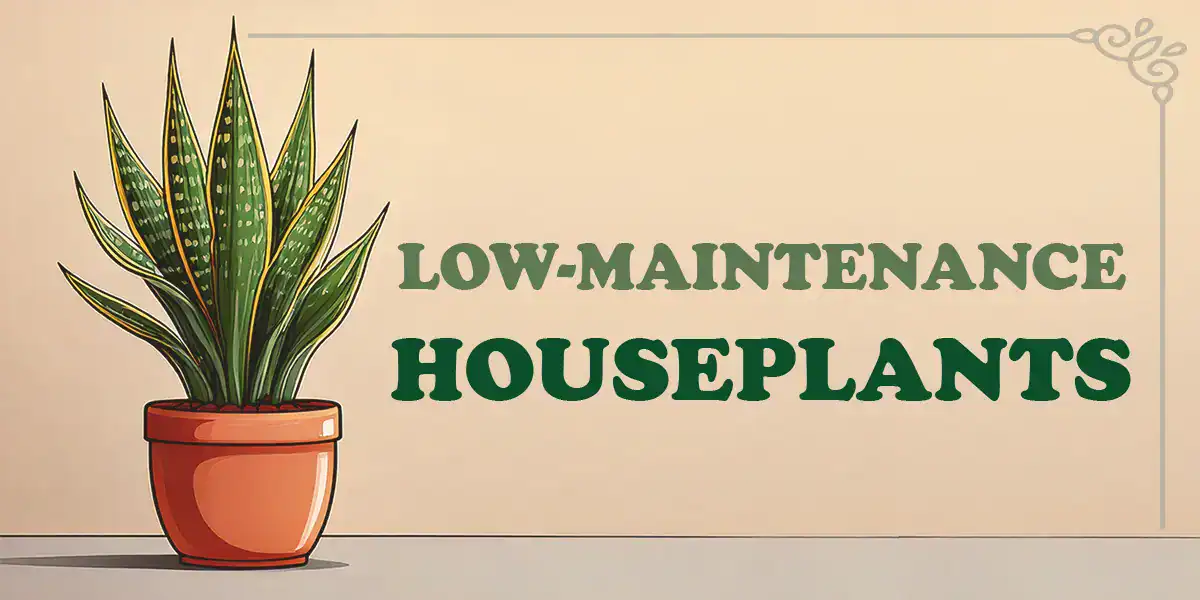We tolerate some high-maintenance things without much complaint:
- The classic English sports car with finicky mechanics
- Saltwater aquariums with precise water chemistry and temperature demands
- High-end fabrics like silk, cashmere, and leather with special cleaning and storage requirements
- Exotic pets with specialized diets, controlled environments, and a need for frequent veterinary care
But maintenance feels like a burden with most other things, including houseplant cultivation. It involves time and energy, both in short supply at the end of the day.
Your high-maintenance cockatoo may be worth the trouble, but not your potted plants.
And what if you’ve gone on a business trip? Will the Dieffenbachia die?
If you love greenery but not extra work, you could be a candidate for low-maintenance houseplants.
They’re perfect for busy lifestyles and gardeners with brown thumbs, and they’re no less fascinating than touchy maidenhair ferns and orchids.
14 Low-Maintenance Plants for Your Home
1. Snake Plant (Sansevieria)
- Care Needs: Tolerates low light, infrequent watering, and neglect.
- Why It Thrives: This hardy plant is happy in nearly any condition. It needs watering only every 2–3 weeks, and dry indoor air doesn’t bother it.
- Unique Perk: Known for its air-purifying qualities and striking sword-like leaves.
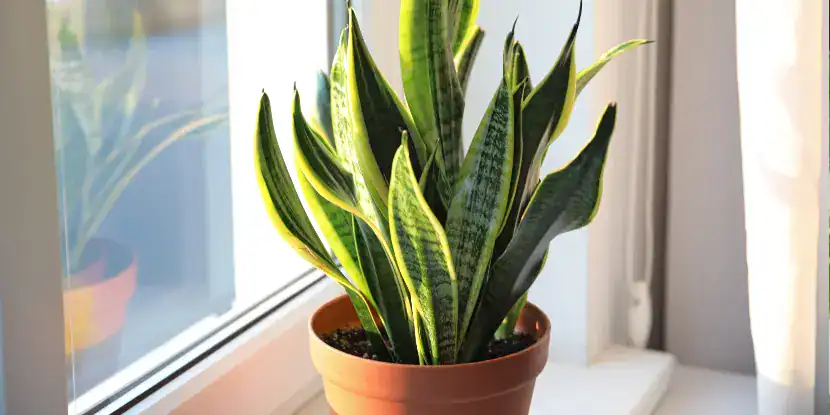
Snake plants convert carbon dioxide into oxygen even at night, making them one of the few plants that improve indoor air quality while you sleep.
2. ZZ Plant (Zamioculcas zamiifolia)
- Care Needs: Thrives on low water and indirect light.
- Why It Thrives: It stores water in its potato-like rhizomes, so it doesn’t mind being left alone. Water it once a month, and it’s good to go.
- Unique Perk: Glossy green leaves make it a low-effort showstopper. The name predates ZZ Top.
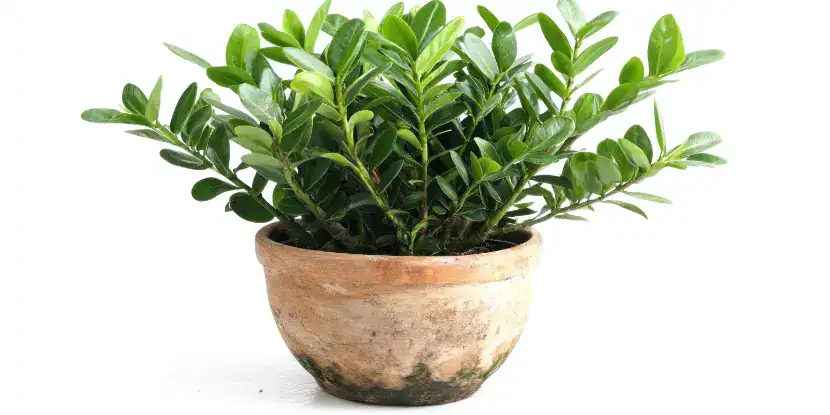
ZZ plants are incredibly hardy and will survive weeks without water, even in low-light conditions.
3. Pothos (Epipremnum aureum)
- Care Needs: Adaptable to varying light levels and occasional watering.
- Why It Thrives: Practically indestructible, it can handle low light or bright indirect light and forgives delayed watering.
- Unique Perk: Remarkably easy to propagate. Its trailing vines bring shelves and walls to life.
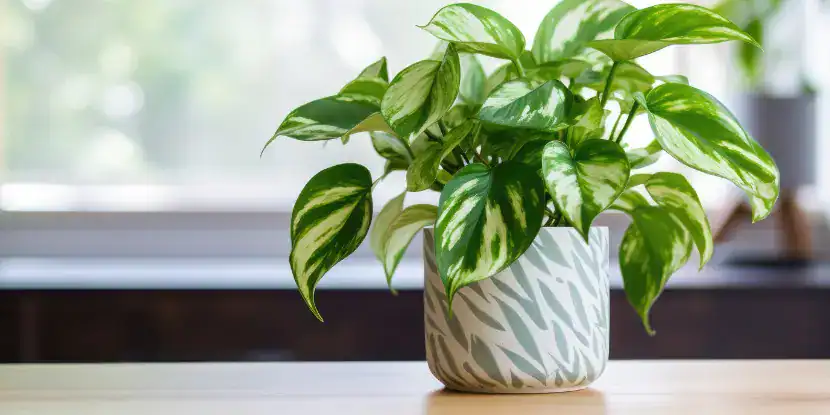
Pothos plants are excellent natural air purifiers and can grow quickly even in low light and with minimal care.
4. Spider Plant (Chlorophytum comosum)
- Care Needs: Happy in indirect sunlight and with light watering every 1–2 weeks.
- Why It Thrives: Resistant to dryness and known for bouncing back even when ignored.
- Unique Perk: Produces charming “spiderettes” (baby plants) for easy propagation. Ubiquitous in college dorm rooms back in the day.
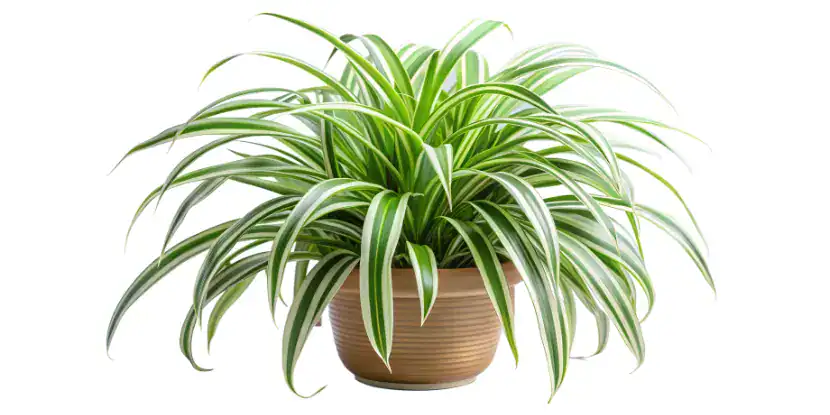
Spider plants purify indoor air by removing toxins like formaldehyde and carbon monoxide.
5. Peace Lily (Spathiphyllum)
- Care Needs: Prefers low light and only needs weekly watering.
- Why It Thrives: It droops when thirsty, reminding you to water.
- Unique Perk: Its elegant, spearlike white blooms elevate a room with little effort on your part.

Peace lily plants bloom indoors and can help remove mold spores and common air toxins.
6. Aloe Vera
- Care Needs: Loves bright, indirect sunlight and occasional watering every 3 weeks.
- Why It Thrives: This succulent stores water in its fleshy leaves, so little maintenance is required.
- Unique Perk: Doubles as a first-aid plant for minor burns and skin care. The juice can soothe the digestive tract and improve gut health.

Aloe vera plants store water in their thick leaves, which contain soothing gel used for healing burns and skin irritations.
7. Cast Iron Plant (Aspidistra elatior)
- Care Needs: Handles low light, irregular watering, and extreme neglect.
- Why It Thrives: True to its name, it’s one of the most indestructible houseplants.
- Unique Perk: Excellent for shaded corners where little else will grow.
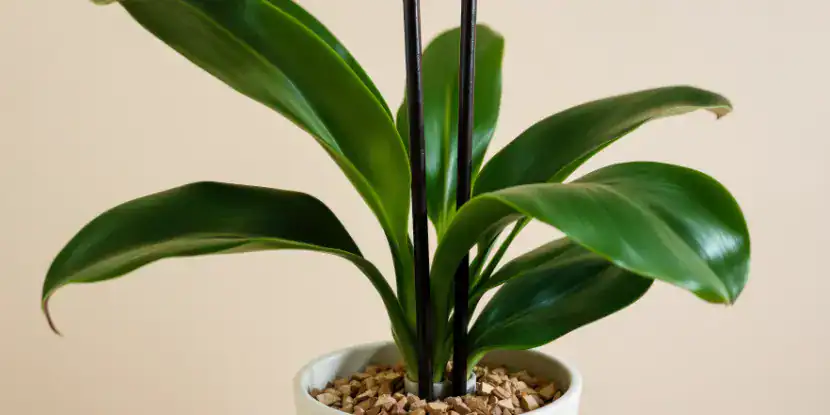
Cast iron plants are nearly indestructible, tolerating low light, neglect, and a wide range of temperatures.
8. Air Plants (Tillandsia)
- Care Needs: Survives on weekly misting or soaking in water every 1–2 weeks.
- Why They Thrive: They don’t need soil — just air circulation and occasional watering.
- Unique Perk: A versatile, soil-free option for glass displays or mounted decor. Plus, pets can’t dig in the pot!
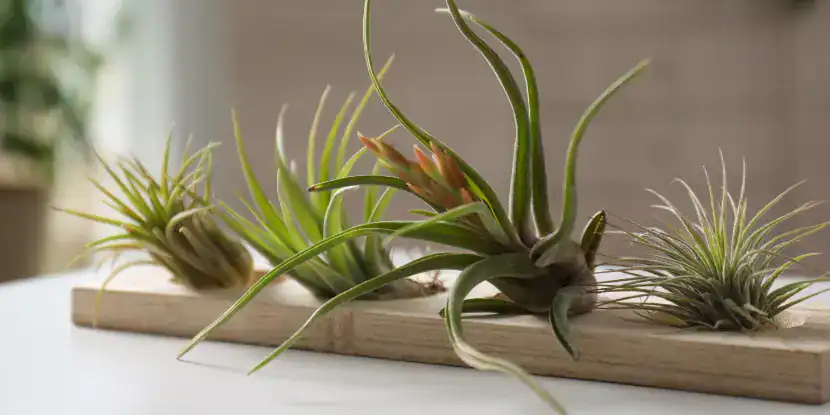
Air plants absorb water and nutrients through their leaves, so they don’t need soil to grow.
9. Chinese Evergreen (Aglaonema)
- Care Needs: Tolerates indirect light, dry air, and infrequent watering.
- Why It Thrives: This forgiving plant can handle long stretches of neglect.
- Unique Perk: Variegated foliage in shades of green and silver adds a decorative touch to interiors.
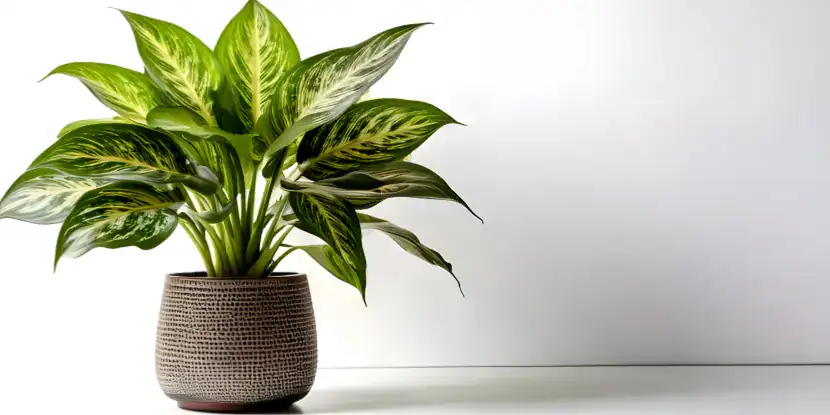
Chinese evergreen plants are known for their ability to thrive in low light and filter indoor air pollutants.
10. Jade Plant (Crassula ovata)
- Care Needs: Requires bright light and watering every 2–3 weeks.
- Why It Thrives: This slow-growing succulent enjoys drying out between waterings.
- Unique Perk: Considered a symbol of good luck and prosperity.
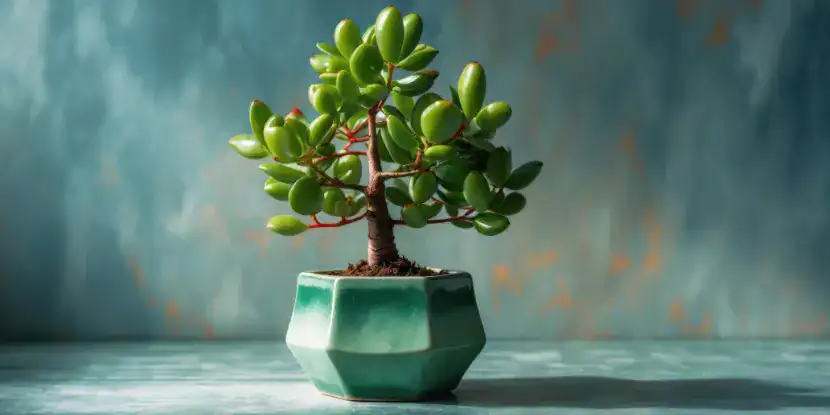
Jade plants are believed to bring good luck and prosperity, and are often called the “money plant” in Feng Shui.
11. Philodendron
- Care Needs: Flourishes in indirect light and needs watering only when the topsoil dries.
- Why It Thrives: Vining varieties are excellent for hanging planters; ease of care is legendary.
- Unique Perk: This fast-growing plant can quickly transform a space.
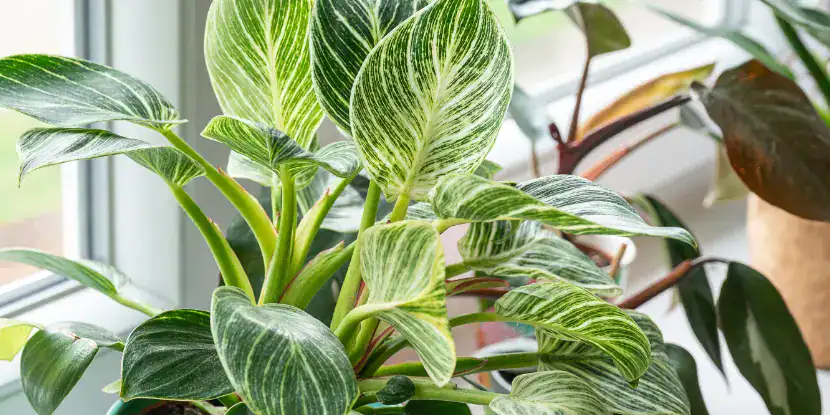
Philodendron plants can adapt to low light or bright light, making them versatile and easy to grow.
12. Rubber Plant (Ficus elastica)
- Care Needs: Low or bright indirect light and watering every week or two.
- Why It Thrives: It forgives you if you forget a watering or two and adapts well to indoor settings.
- Unique Perk: Large, glossy, dark green leaves make it almost sculptural.
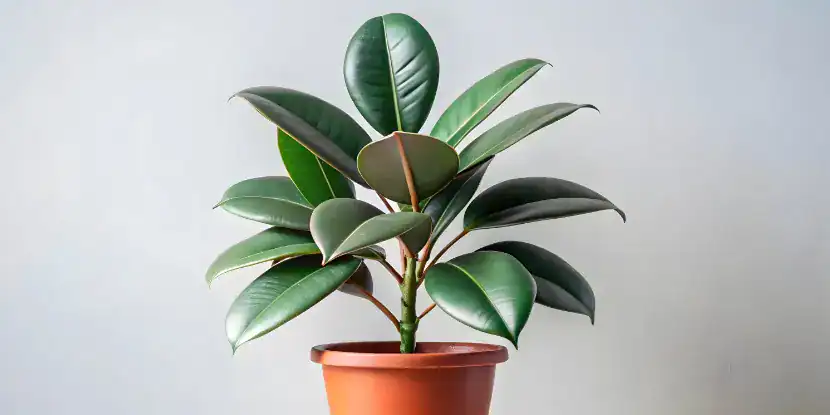
Rubber plants can grow into large indoor trees and improve air quality by removing toxins.
13. Cacti
- Care Needs: Plenty of sunlight and watering only every 3–4 weeks.
- Why It Thrives: These desert plants can survive prolonged periods of drought, making them the ultimate low-maintenance option.
- Unique Perk: Available in various shapes and sizes. Exceptionally long-lived with proper care.
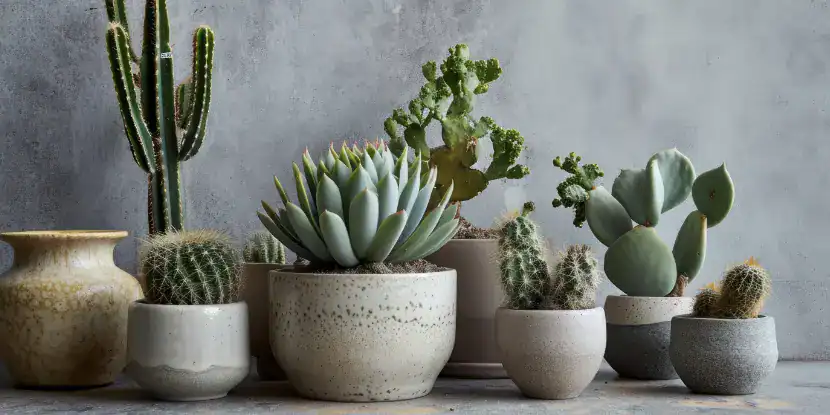
Cacti store water in their thick stems, allowing them to survive long periods without watering.
14. Lucky Bamboo (Dracaena sanderiana)
- Care Needs: Thrives in low light and grows in both soil and water. Weekly watering is optional!
- Why It Thrives: It’s incredibly adaptable and practically grows itself.
- Unique Perk: Considered a feng shui plant, it brings serenity to your home.
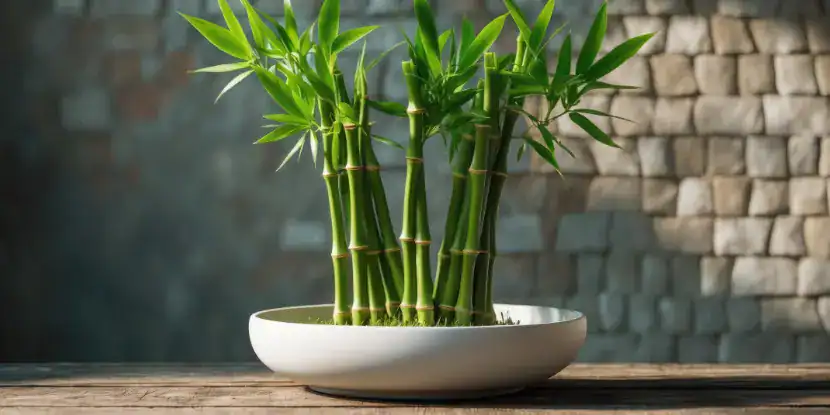
Dracaena sanderiana, also known as lucky bamboo, can grow in water without soil.
FAQs: Low-Maintenance Houseplants
Q: Do I need to fertilize indoor plants regularly?
While most indoor plants benefit from light fertilization, it typically depends on the plant type and the season. For example, fertilizing once every 4–6 weeks during the growing season (spring and summer) is usually sufficient.
Q: How do I avoid overwatering my indoor plants?
Always check the top inch of soil for dryness before watering. Ensure pots have proper drainage, and avoid leaving water in saucers.
Q: What are the best indoor plants for low light conditions?
Plants like snake plants, pothos, and lucky bamboo are ideal for spaces with limited sunlight.
Q: Can I use tap water for my plants?
Most plants tolerate tap water, but leave it out for 24 hours before use to allow chlorine to dissipate. Sensitive plants may prefer filtered or distilled water.
Q: How often should I repot my plants?
Most plants need repotting every 1–2 years or when they outgrow their current pot. Signs include roots growing out of the drainage holes or stunted growth.
Q: Do indoor plants improve air quality?
Many indoor plants help purify the air by removing toxins and increasing oxygen levels. Examples include peace lilies, spider plants, and rubber plants.
Q: How can I increase humidity for my plants indoors?
You can mist the plants, use a humidity tray with water and pebbles, or place a humidifier nearby.
Q: What should I do if my plant is infested with pests?
Isolate the affected plant immediately and treat it with natural remedies like neem oil or insecticidal soap. Check your other plants regularly to prevent the spread of pests.

